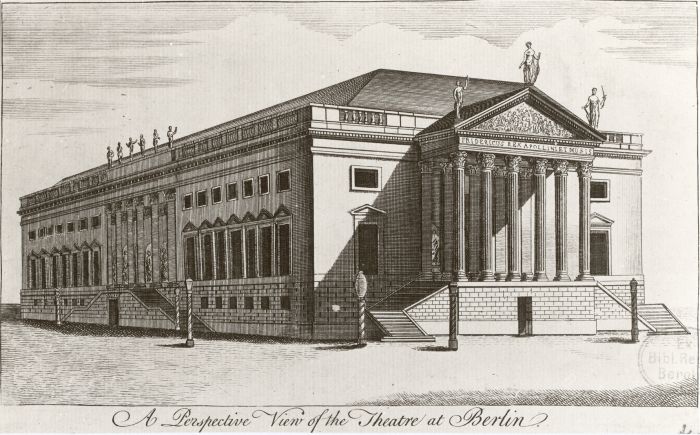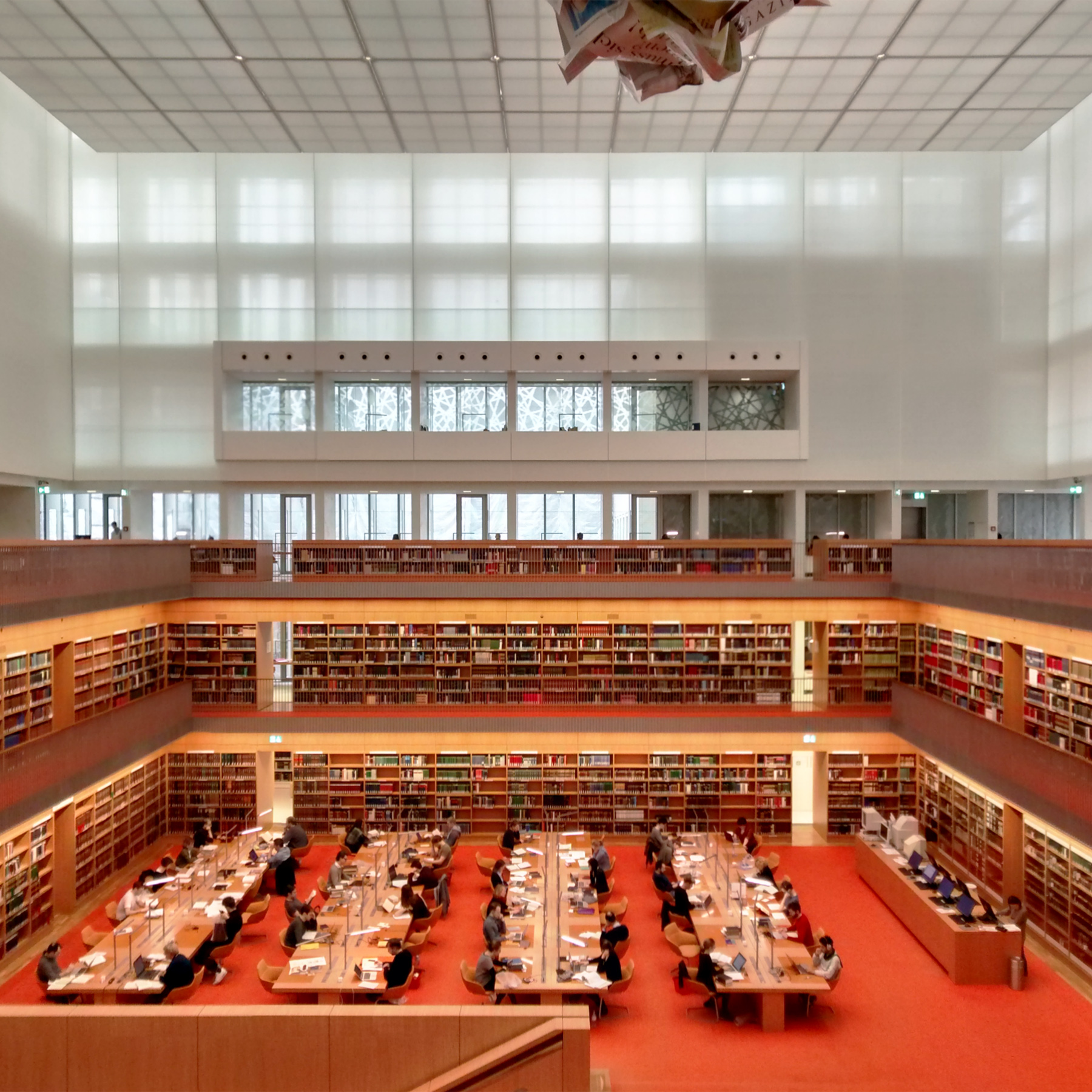|
Berlin-Dorotheenstadt
is a historic zone or neighbourhood (''Stadtviertel'') of central Berlin, Germany, which forms part of the locality (''Ortsteil'') of Mitte within the borough (''Bezirk'') also called Mitte. It contains several famous Berlin landmarks: the Brandenburg Gate, the Pariser Platz, and Unter den Linden. Location Dorotheenstadt is bordered in the west by the Großer Tiergarten, in the north by the River Spree, in the northeast by the Kupfergraben (part of the Spree canal system), in the east by Hinter dem Gießhaus and Oberwallstraße and in the south by the Behrenstraße. History In 1670, the "Great Elector" Frederick William made a gift to his second wife, Sophie Dorothea of Schleswig-Holstein-Sonderburg-Glücksburg, of the Cölln estate of Tiergarten, located between the wall surrounding Berlin and the Großer Tiergarten. A new settlement, initially called Neustadt (New Town), was laid out according to a strict rectangular street grid planned by Joachim Ernst Blesendorf, t ... [...More Info...] [...Related Items...] OR: [Wikipedia] [Google] [Baidu] |
Bundesarchiv Bild 183-S99675, Berlin, Dorotheenstädtische Kirche Unter Den Linden
, type = Archive , seal = , seal_size = , seal_caption = , seal_alt = , logo = Bundesarchiv-Logo.svg , logo_size = , logo_caption = , logo_alt = , image = Bundesarchiv Koblenz.jpg , image_caption = The Federal Archives in Koblenz , image_alt = , formed = , preceding1 = , preceding2 = , dissolved = , superseding1 = , superseding2 = , agency_type = , jurisdiction = , status = Active , headquarters = PotsdamerStraße156075Koblenz , coordinates = , motto = , employees = , budget = million () , chief1_name = Michael Hollmann , chief1_position = President of the Federal Archives , chief2_name = Dr. Andrea Hänger , chief2_position ... [...More Info...] [...Related Items...] OR: [Wikipedia] [Google] [Baidu] |
Embassy Of The United States In Berlin
The Embassy of the United States of America in Berlin is the diplomatic mission of the United States of America in the Federal Republic of Germany. It started in 1797, with the appointment of John Quincy Adams to Berlin, the capital of Prussia. There was no permanent building for the embassy until 1930, with the purchase of the Blücher Palace. During the U.S. involvement in World War II, the embassy ceased operations. During the Cold War, the United States had two embassies: one in Bonn, the capital of West Germany, and one in East Berlin, the capital of East Germany. In 1999, the embassy would fully be moved back to Berlin and, at present, it is located at the Pariser Platz. Embassy history 1797–1930 The U.S. Embassy in Berlin probably began with the 1797 appointment of John Quincy Adams to the then capital of Prussia, Berlin. At the time these missions in Berlin, Prussia were called legations, and there were other American legations in other parts of what would later be ... [...More Info...] [...Related Items...] OR: [Wikipedia] [Google] [Baidu] |
German Reunification
German reunification (german: link=no, Deutsche Wiedervereinigung) was the process of re-establishing Germany as a united and fully sovereign state, which took place between 2 May 1989 and 15 March 1991. The day of 3 October 1990 when the German Reunification Treaty entered into force dissolving the German Democratic Republic (GDR; german: link=no, Deutsche Demokratische Republik, DDR, or East Germany) and integrating its recently re-established constituent federated states into the Federal Republic of Germany (FRG; german: link=no, Bundesrepublik Deutschland, BRD, or West Germany) to form present-day Germany, has been chosen as the customary ''German Unity Day'' () and has thereafter been celebrated each year from 1991 as a national holiday. East and West Berlin were united into a single city and eventually became the capital of reunited Germany. The East Germany's government led by the Socialist Unity Party of Germany (SED) (a communist party) started to falter on 2 May 1 ... [...More Info...] [...Related Items...] OR: [Wikipedia] [Google] [Baidu] |
German Democratic Republic
German(s) may refer to: * Germany (of or related to) **Germania (historical use) * Germans, citizens of Germany, people of German ancestry, or native speakers of the German language ** For citizens of Germany, see also German nationality law **Germanic peoples (Roman times) * German language **any of the Germanic languages * German cuisine, traditional foods of Germany People * German (given name) * German (surname) * Germán, a Spanish name Places * German (parish), Isle of Man * German, Albania, or Gërmej * German, Bulgaria * German, Iran * German, North Macedonia * German, New York, U.S. * Agios Germanos, Greece Other uses * German (mythology), a South Slavic mythological being * Germans (band), a Canadian rock band * German (song), "German" (song), a 2019 song by No Money Enterprise * ''The German'', a 2008 short film * "The Germans", an episode of ''Fawlty Towers'' * ''The German'', a nickname for Congolese rebel André Kisase Ngandu See also * Germanic (disambi ... [...More Info...] [...Related Items...] OR: [Wikipedia] [Google] [Baidu] |
Alte Bibliothek (Berlin)
The Alte Bibliothek (), nicknamed Kommode (Commode), is a listed building on Bebelplatz in the historic centre of Berlin. It was erected by order of Frederick the Great from 1774 to 1780 according to plans by Georg Christian Unger and Georg Friedrich Boumann in Baroque style. Older plans by Joseph Emanuel Fischer von Erlach for St. Michael's Wing of Vienna Hofburg served as a basis for the first freestanding library building of Berlin. Damaged during the Allied bombing in World War II, the former Royal Prussian Library was rebuilt from 1963 to 1969 as part of the Forum Fridericianum. Since then, the Alte Bibliothek has been home to the Law Faculty of the Humboldt-Universität Humboldt-Universität zu Berlin (german: Humboldt-Universität zu Berlin, abbreviated HU Berlin) is a German public research university in the central borough of Mitte in Berlin. It was established by Frederick William III on the initiative o .... [...More Info...] [...Related Items...] OR: [Wikipedia] [Google] [Baidu] |
Berlin State Opera
The (), also known as the Berlin State Opera (german: Staatsoper Berlin), is a listed building on Unter den Linden boulevard in the historic center of Berlin, Germany. The opera house was built by order of Prussian king Frederick the Great from 1741 to 1743 according to plans by Georg Wenzeslaus von Knobelsdorff in the Palladian style. Damaged during the Allied bombing in World War II, the former Royal Prussian Opera House was rebuilt from 1951 to 1955 as part of the Forum Fridericianum square. Nicknamed ''Lindenoper'' in Berlin, it is "the first theater anywhere to be, by itself, a prominent, freestanding monumental building in a city." History Names Originally called the ''Königliche Oper'' (Royal Opera) from 1743, it was renamed as the ''Preußische Staatsoper'' (Prussian State Opera) in 1919, then as the ''Deutsche Staatsoper '' in 1955. Until 1990, it housed the state opera of East Germany. Since 1990, it is officially called the ''Staatsoper Unter den Linden'' (State Ope ... [...More Info...] [...Related Items...] OR: [Wikipedia] [Google] [Baidu] |
East Berlin
East Berlin was the ''de facto'' capital city of East Germany from 1949 to 1990. Formally, it was the Allied occupation zones in Germany, Soviet sector of Berlin, established in 1945. The American, British, and French sectors were known as West Berlin. From 13 August 1961 until 9 November 1989, East Berlin was separated from West Berlin by the Berlin Wall. The Western Allied powers did not recognize East Berlin as the GDR's capital, nor the GDR's authority to govern East Berlin. On 3 October 1990, the day Germany was officially German reunification, reunified, East and West Berlin formally reunited as the city of Berlin. Overview With the London Protocol (1944), London Protocol of 1944 signed on 12 September 1944, the United States, the United Kingdom, and the Soviet Union decided to divide Germany into three occupation zones and to establish a special area of Berlin, which was occupied by the three Allied Forces together. In May 1945, the Soviet Union installed a city gove ... [...More Info...] [...Related Items...] OR: [Wikipedia] [Google] [Baidu] |
Greater Berlin
The Greater Berlin Act (german: Groß-Berlin-Gesetz), officially Law Regarding the Creation of the New Municipality of Berlin (german: Gesetz über die Bildung einer neuen Stadtgemeinde Berlin), was a law passed by the Prussian state government in 1920, which greatly expanded the size of the Prussian and German capital of Berlin. History Berlin had been part of the Province of Brandenburg since 1815. On 1 April 1881, the city became Stadtkreis Berlin, a city district separate from Brandenburg. The Greater Berlin Act was passed by the Prussian Parliament on 27 April 1920 and came into effect on 1 October of the same year. The new Prussian province then termed ''Greater Berlin'' acquired territories from the Province of Brandenburg and consisted of the following: * The city of Berlin (''Alt-Berlin''); * 7 towns that surrounded Berlin: Charlottenburg, Köpenick, Lichtenberg, Neukölln/Rixdorf, Schöneberg, Spandau and Wilmersdorf; * 59 rural communities and 27 estate districts fr ... [...More Info...] [...Related Items...] OR: [Wikipedia] [Google] [Baidu] |
Friedrichstraße Station
The Friedrichstraße () (lit. ''Frederick Street'') is a major culture and shopping street in central Berlin, forming the core of the Friedrichstadt neighborhood and giving the name to Berlin Friedrichstraße station. It runs from the northern part of the old Mitte district (north of which it is called Chausseestraße) to the Hallesches Tor in the district of Kreuzberg. This downtown area is known for its expensive real estate market and the campus of the Hertie School of Governance. Due to its north-southerly direction, it forms important junctions with the east-western axes, most notably with Leipziger Straße and Unter den Linden. The U6 U-Bahn line runs underneath. During the Cold War it was bisected by the Berlin Wall and was the location of Checkpoint Charlie. Overview As central Berlin's traditional shopping street, Friedrichstraße is three blocks east of the parallel Wilhelmstraße, the historic heart of the old government quarter ''(Regierungsviertel)'' until 1945 ... [...More Info...] [...Related Items...] OR: [Wikipedia] [Google] [Baidu] |
Berlin Stadtbahn
The Berlin Stadtbahn ("city railway") is a major railway thoroughfare in the German capital Berlin, which runs through Berlin from east to west. It connects the eastern district of Friedrichshain with Charlottenburg in the west via 11 intermediate stations including Hauptbahnhof. The Berlin Stadtbahn is often also defined as the slightly longer route between Ostkreuz and Westkreuz, although this is not technically correct. The line was originally built in the 1880s. It is in length, and is entirely elevated above the city's streets. The four track route carries S-Bahn, Regionalbahn, Regional-Express, Intercity, EuroCity and Intercity-Express trains. Operation Structure and tracks The Stadtbahn line is an elevated rail line with viaducts totalling in length and including 731 masonry viaduct arches. A further of the line are situated on 64 bridges, that cross adjoining streets and (three times) the River Spree. The remaining length of the line is on an embankment. The ... [...More Info...] [...Related Items...] OR: [Wikipedia] [Google] [Baidu] |
Berlin State Library
The Berlin State Library (german: Staatsbibliothek zu Berlin; officially abbreviated as ''SBB'', colloquially ''Stabi'') is a universal library in Berlin, Germany and a property of the Prussian Cultural Heritage Foundation. It is one of the largest libraries in Europe, and one of the most important academic research libraries in the German-speaking world. It collects texts, media and cultural works from all fields in all languages, from all time periods and all countries of the world, which are of interest for academic and research purposes. Some famous items in its collection include the oldest biblical illustrations in the fifth-century Quedlinburg Itala fragment, a Gutenberg Bible, the main autograph collection of Goethe, the world's largest collection of Johann Sebastian Bach's and Wolfgang Amadeus Mozart's manuscripts, and the original score of Ludwig van Beethoven's Symphony No. 9. Central functions and cooperation with other libraries The SBB is one of six libraries for ... [...More Info...] [...Related Items...] OR: [Wikipedia] [Google] [Baidu] |




